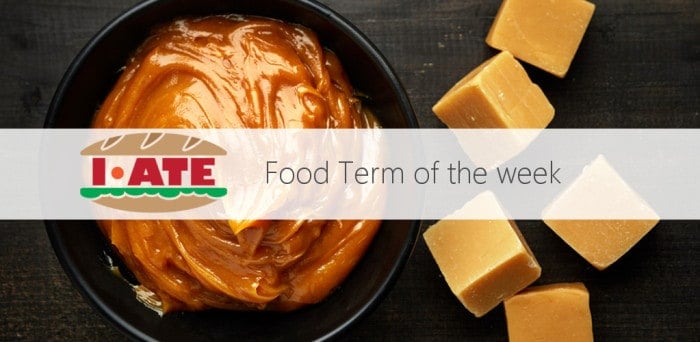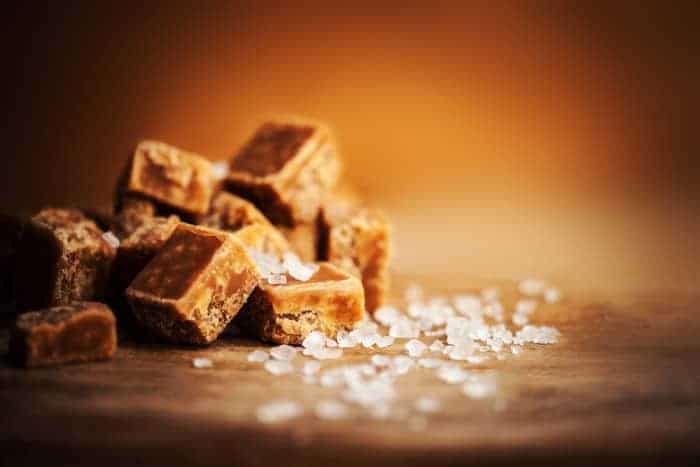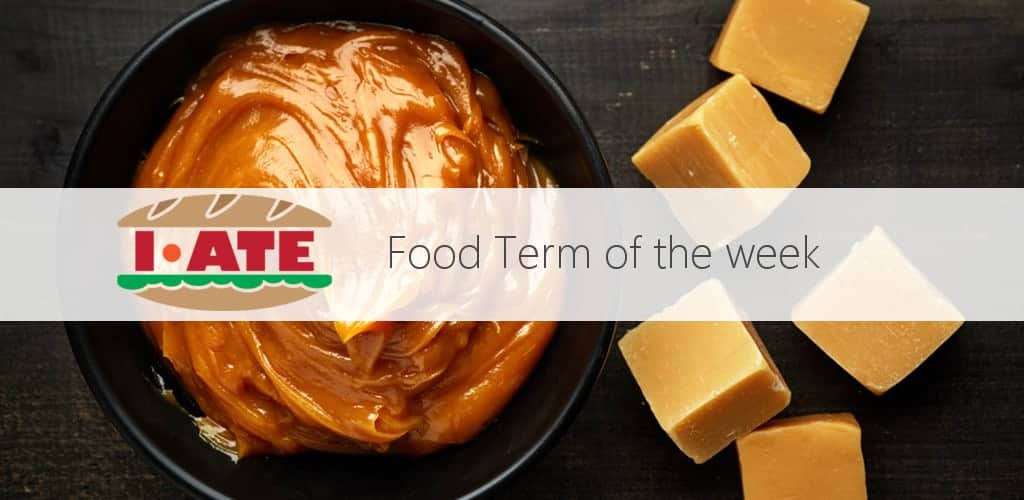Caramel, the sweetest of sweets, deserved an entry in I·ATE. Of course you know what it is, but in order to provide a proper definition: it is a confectionery product obtained by heating a variety of sugars (caramelization). It can be used as a flavouring, a filling or a topping in many different desserts, for the production of sweets, not to mention the thousands of possibilities to be served. Get ready and better take a piece of something sweet if you don’t want to have your mouth watering!

Talking about desserts, you may picture caramel being used for flavouring and colouring soups, stocks and sauces. Cakes, pastries, crêpes, ice creams, waffles, cookies, muffins… it is a never-ending list! When you cook it, let it cool and harden, it cracks easily, and this crushed caramel is commonly used as as topping for ice cream, yoghurt or any other creamy dessert. You can also prepare the delicious soft caramel candy, by mixing caramelized sugar, butter, milk or cream, and sometimes corn syrup as well.
Salted caramel –caramel au beurre salé, in French- may be at the moment one of the most popular and widespread variants. Being a combination that has long enchanted French and American chefs, the flavour itself was developed decades ago. Bretagne, in France, is the place where the concept for salted caramel came to be, and is famous for its rich butter and salt. It was the French pastry chef Henri Le Roux who came up with the idea of combining these tasty flavours into a sweet and savoury candy.


Written by Ana Jiménez Morente
Content Editor. Communication Trainee, DG TRAD – Terminology Coordination Unit
- Encyclopedia: Food Network. 2016. caramel. Available at: http://www.foodterms.com/encyclopedia/caramel/index.html. [Accessed 09 December 2016].
- Encyclopedia: Food Network. 2016. dulce de leche. Available at: http://www.foodterms.com/encyclopedia/dulce-de-leche/index.html. [Accessed 09 December 2016].
- Instantly Blog. 2016. Salted Caramel: How an Unusual Flavor Grew Into a Taste Sensation. Available at: https://blog.instant.ly/blog/2014/10/salted-caramel-how-an-unusual-flavor-grew-into-a-taste-sensation/. [Accessed 09 December 2016].
- Kim Severson. 2016. How Caramel Developed a Taste for Salt – The New York Times. Available at: http://www.nytimes.com/2008/12/31/dining/31cara.html. [Accessed 09 December 2016].

